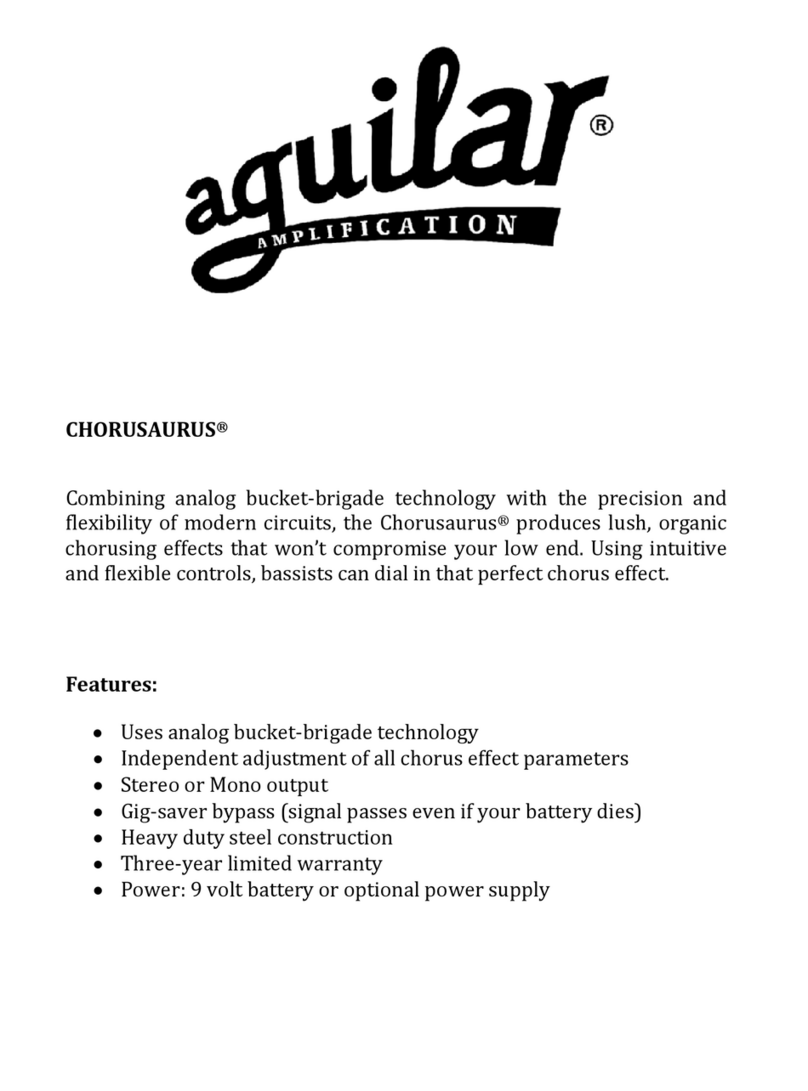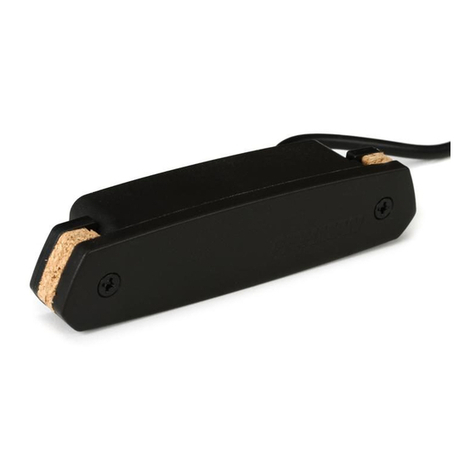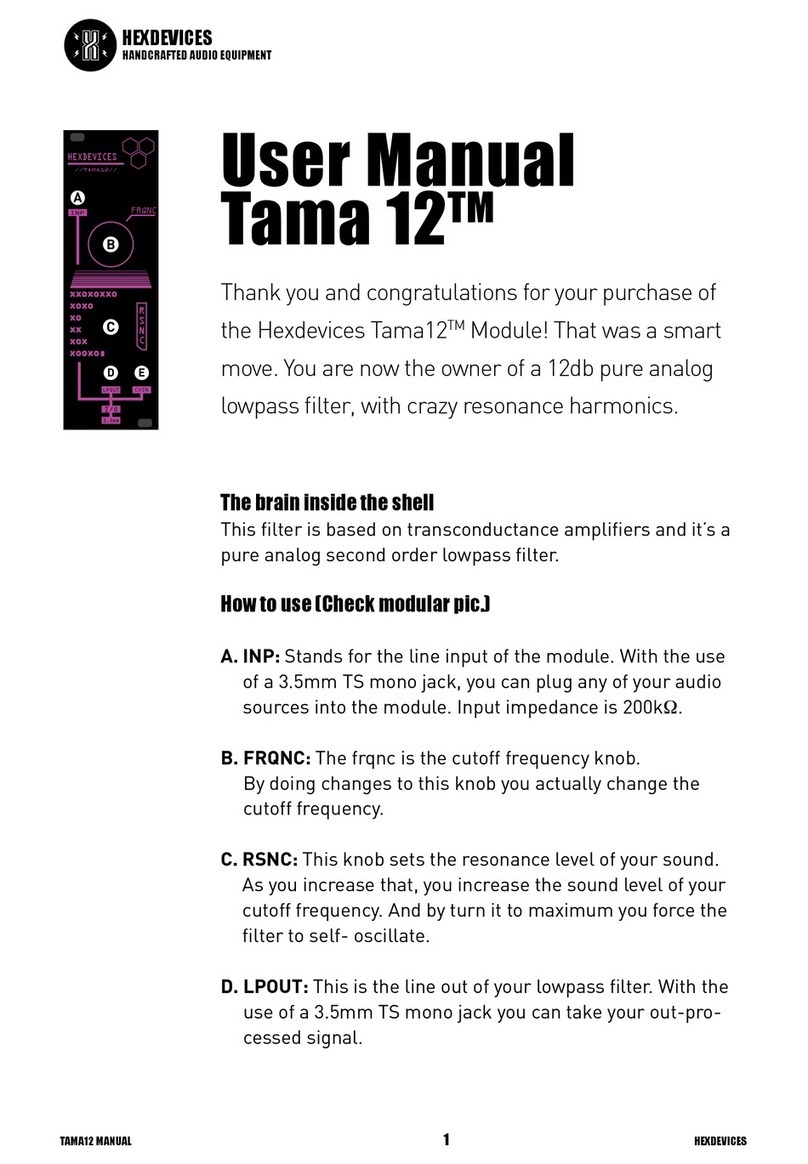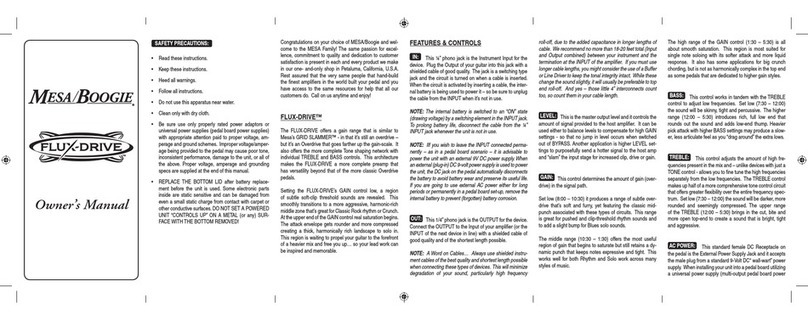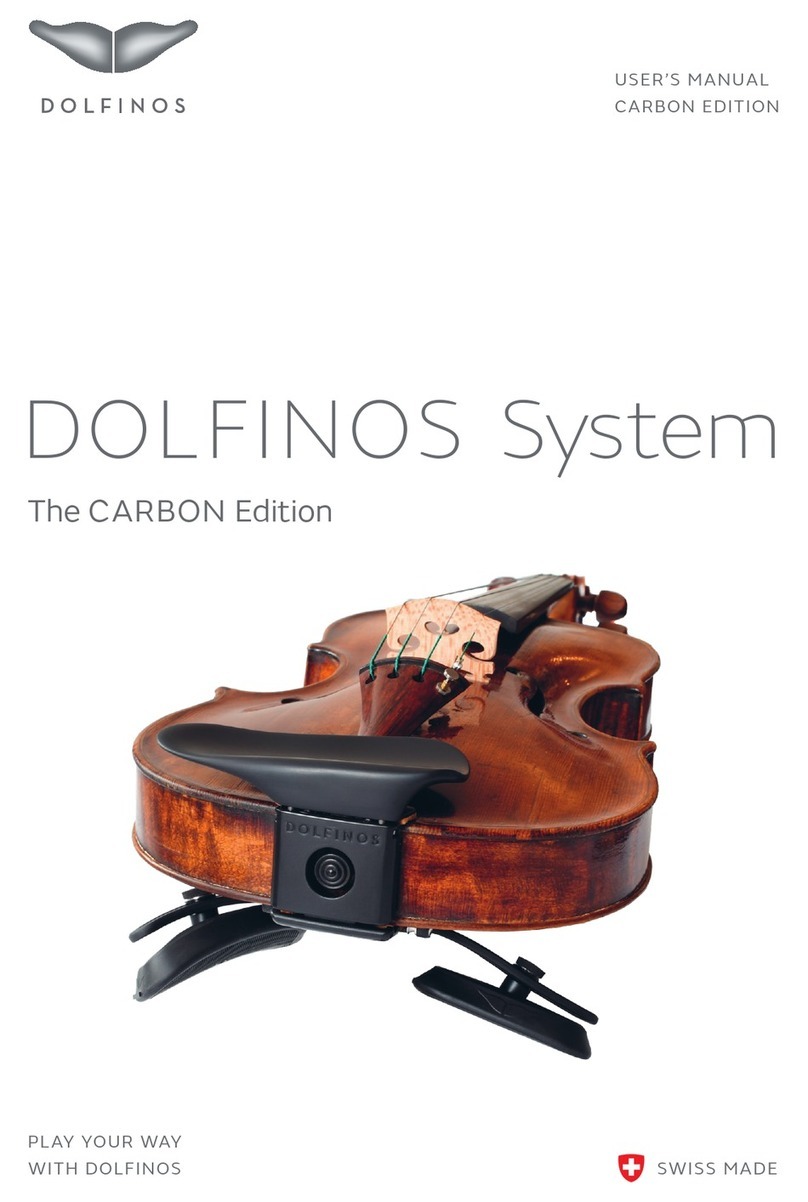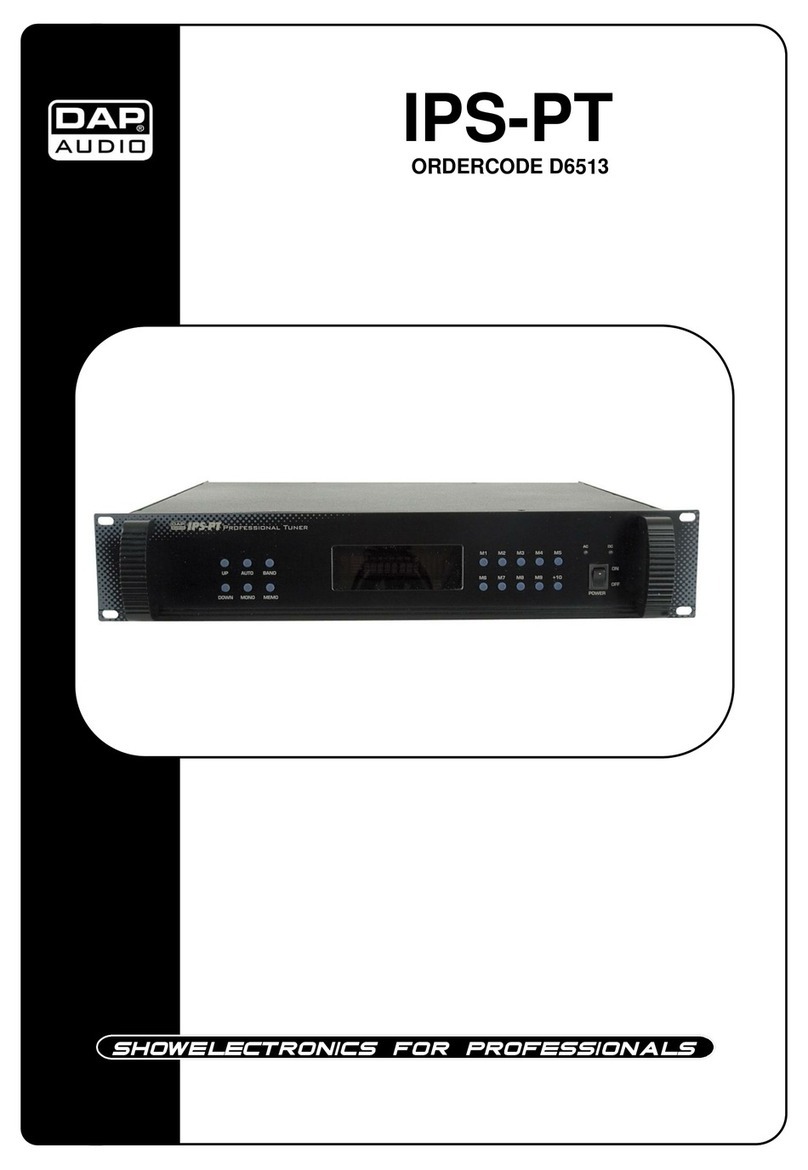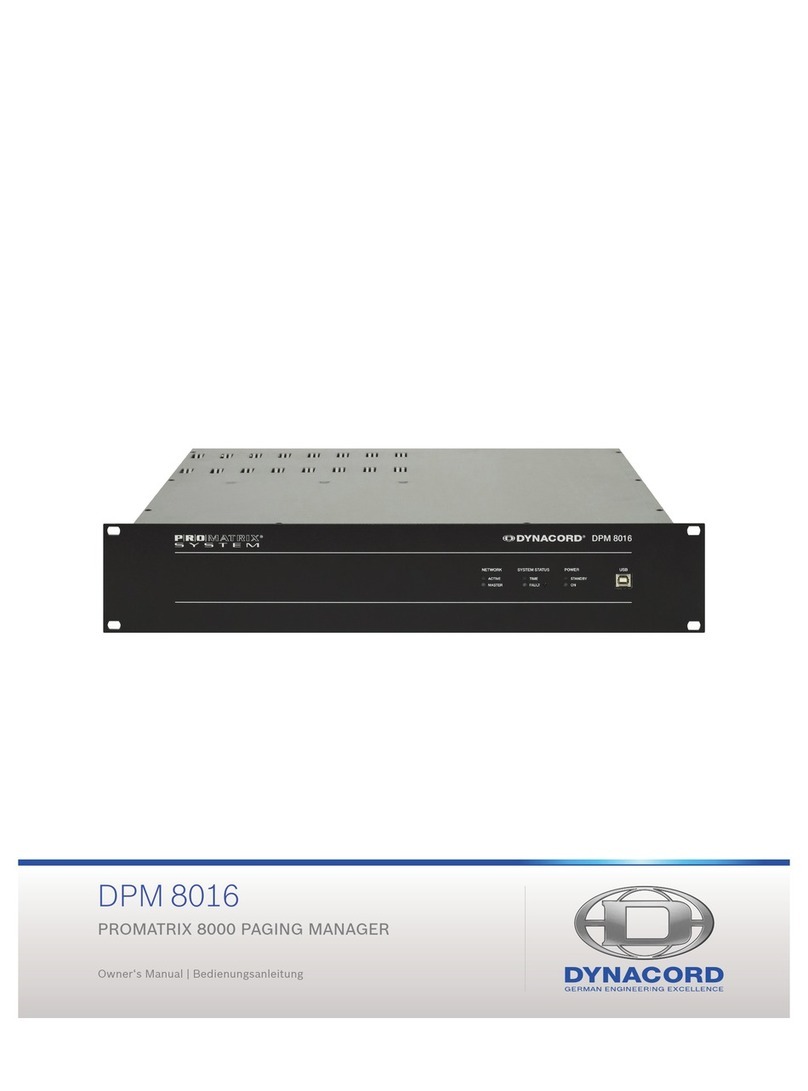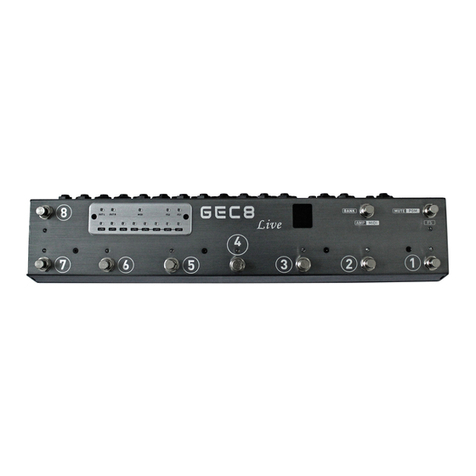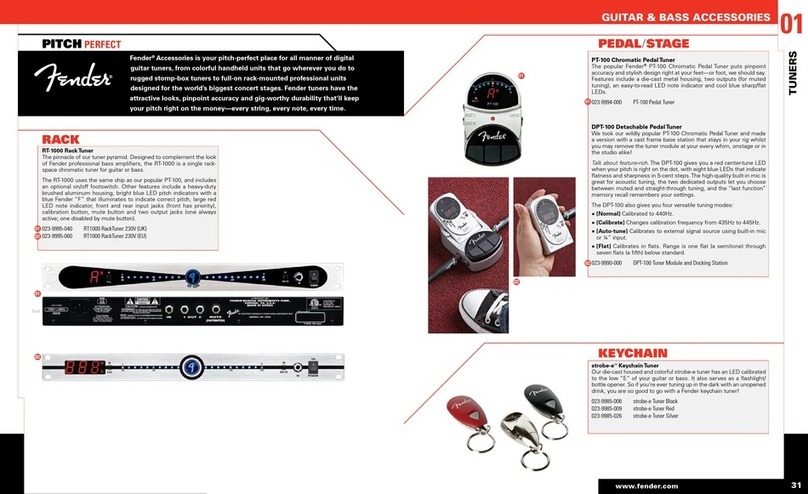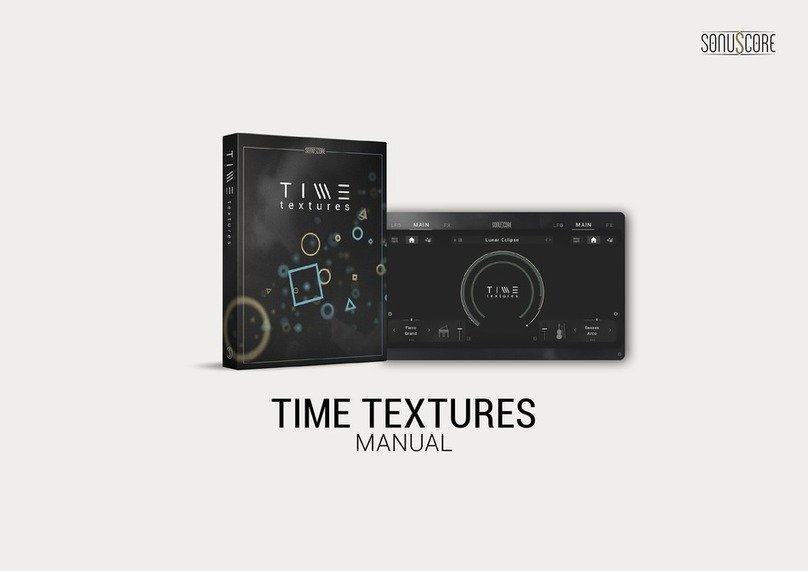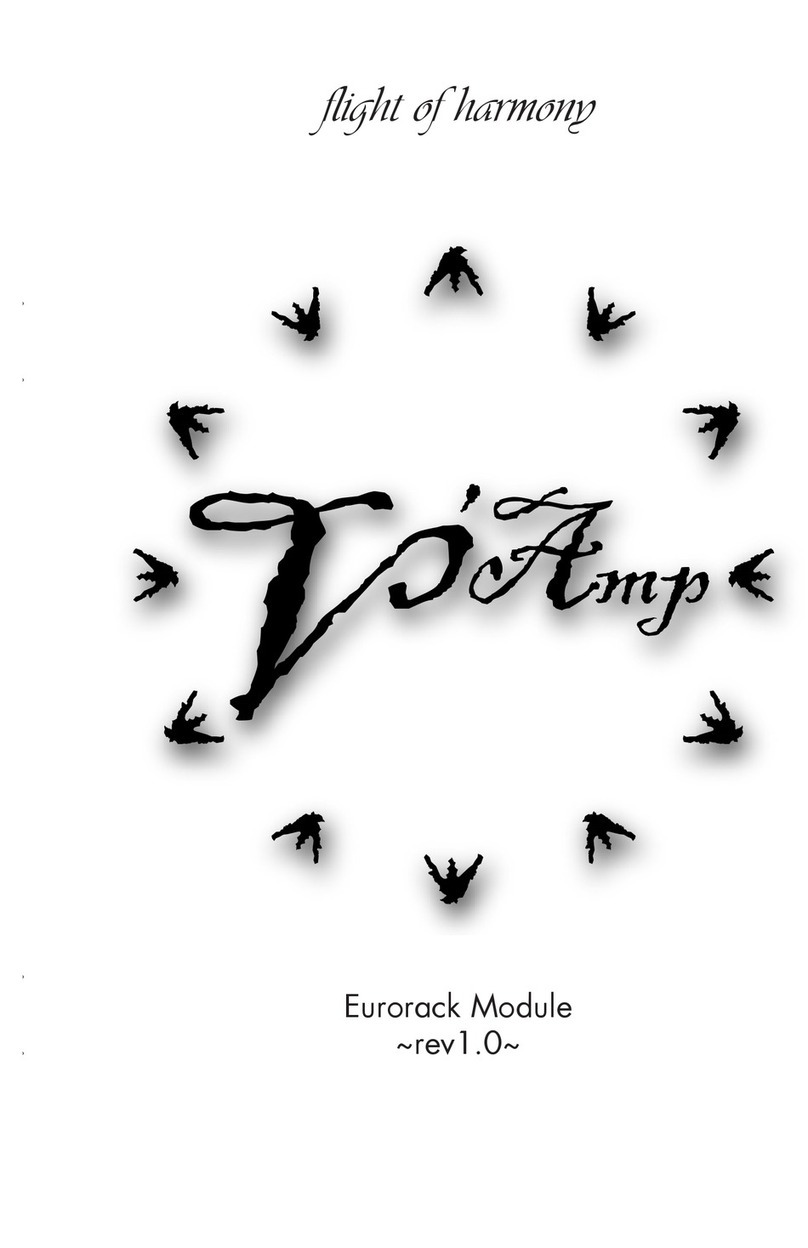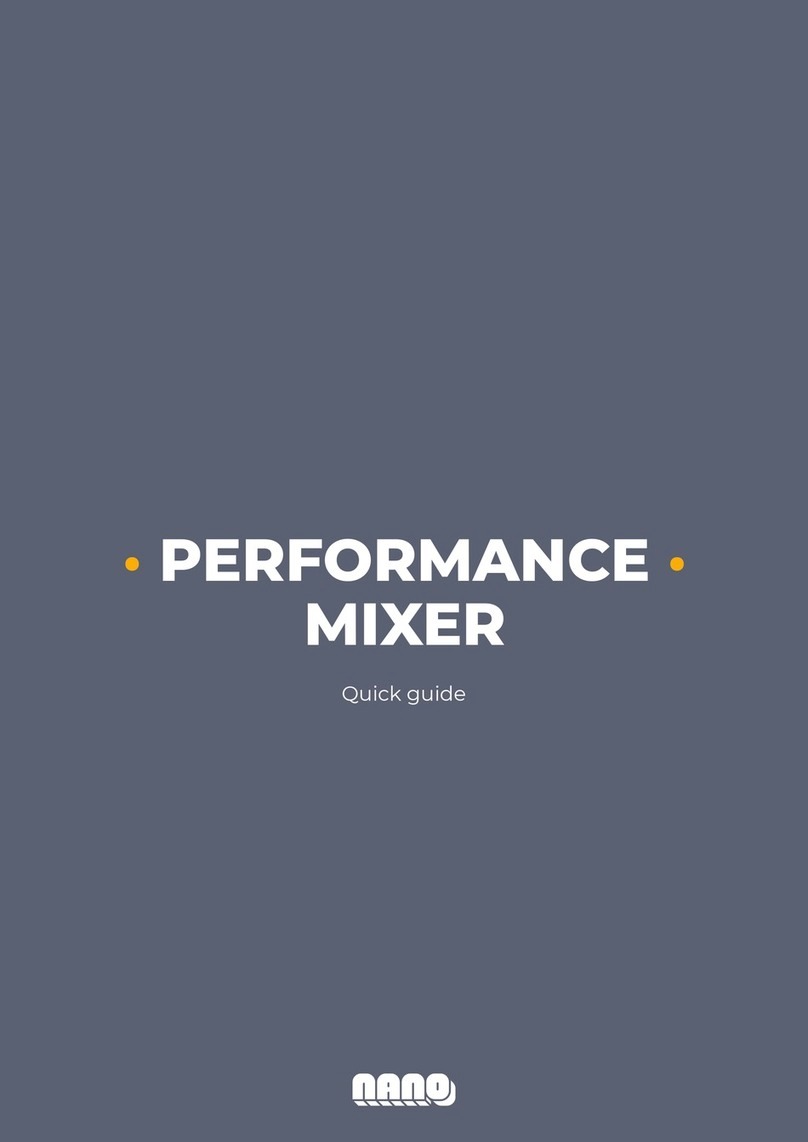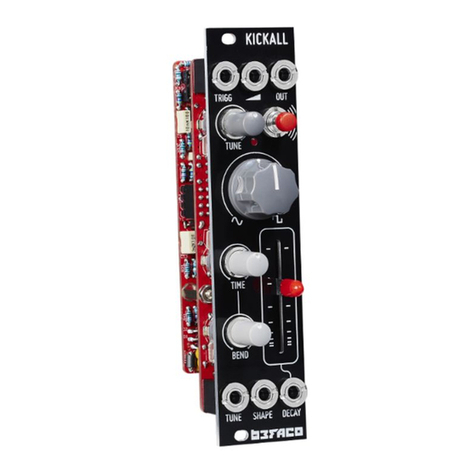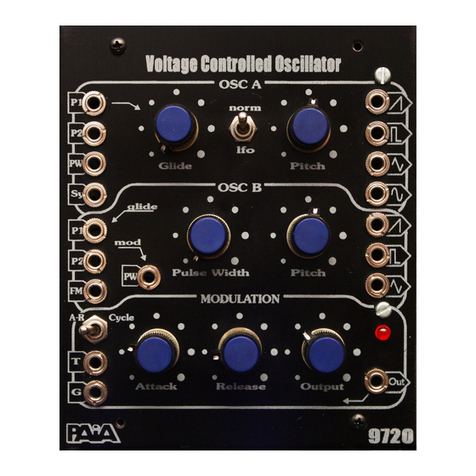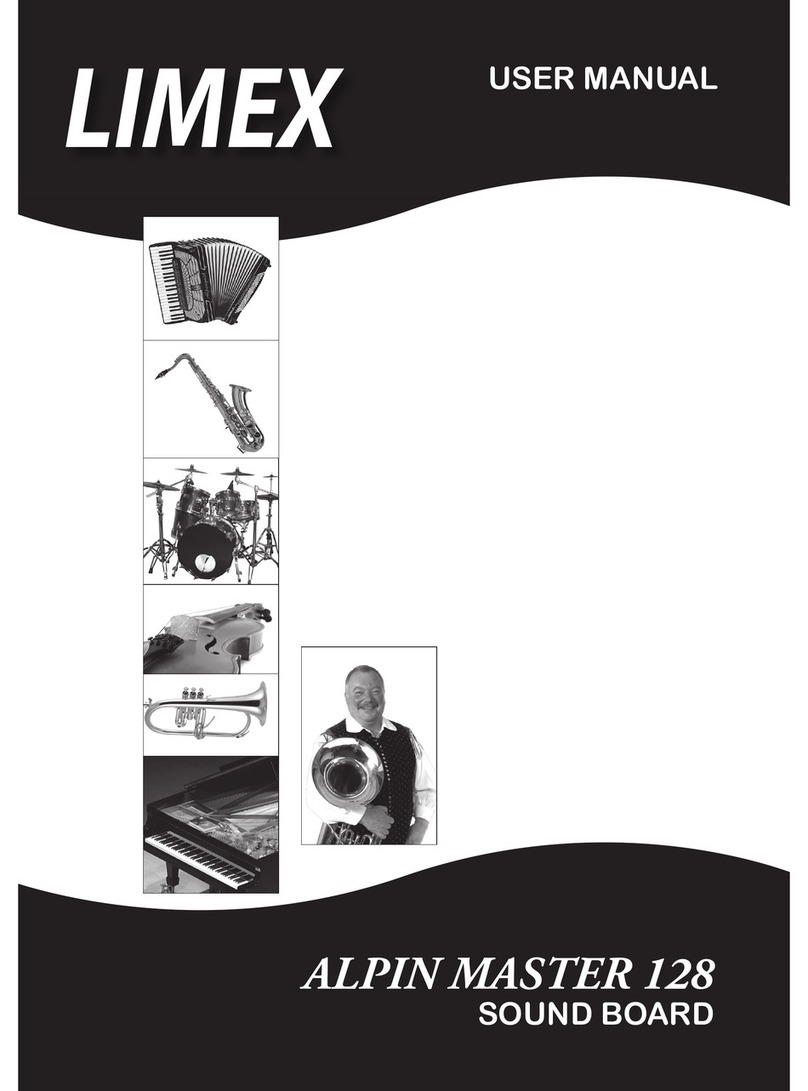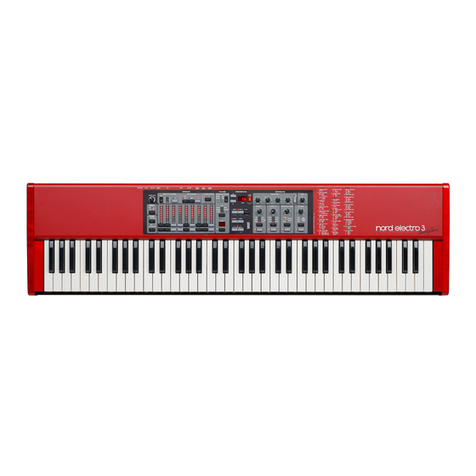RME Audio MADI Converter User guide

Usage and Applications

RME - the development team
RME consists of a German team of developers with a
robust vision for creating innovative, user friendly, and
sophisticated digital audio solutions that will meet any
professional budget. Founded in 1996, RME quickly earned
their stripes as a premier industry provider, expanding
rapidly into mainstream international markets.
Each developer in the RME team is either a musician or
sound engineer, as well as being a specialist in hardware
and software development. In addition to their proven
skills, they also regularly network with specialists within
other industries to exchange knowledge and know-how -
aiming to gain a competitive advantage in the audio industy.
RME is absolutely commited to sell, update and maintain
each of their products for many years - exceeding the
average lifetime of most other products in their league.
Nevertheless, a consistent string of new and innovative
products throughout RME’s history, has earned frequent
awards and accolades from the press and the public.
RME - the industry standard
RME products are known for their reliability and their unique feature sets. Acknowledged by professional users and hobbyists
alike, their digital interfaces and analog converters capture, transport and play back audio with exceptional quality - for which
they have received numerous awards. After having also been included in many scientific and industrial applications, RME has
set a standard much talked about whenever the focus is on uncompressed, high quality audio.
This brochure is focuses on MADI - a protocol that has evolved alongside RME to be the most widely accepted multi channel
digital audio protocol on the market. It has been written for anyone who is new to the technology or who feels the need to
know a bit more about how MADI may be used to create or extend audio systems for their specific requirements.
MADI Router
12 Port MADI Digital Patch Bay & Format Converter
- 2 -

- 4 -
MADI stream
to FOH / control room
Why MADI?
With its architecture directly related to the AES3 (AES/EBU)
audio protocol and its widely available consumer equivalent
S/PDIF, MADI is a format that provides sim-plicity, extremely
low latencies and ease of use across short and long distances.
MADI is designed to send up to 64 audio channels at 48kHz
sampling frequency (32 channels at 96kHz, 16 channels at
192kHz) from one device to another device in a unidirectional
data stream. This distinguishes MADI signals from so-called
“network audio protocols” that require user interaction to
send audio signals between several audio devices once they
have detected each other in a local area network.
The fact that MADI is a point-to-point protocol simplifies the
design of digital audio devices, and brings several benefits
for the user:
• Audio devices with MADI such as A/D or digital format
converters, computer audio interfaces and others
have incredibly low boot up times of usually less
than 5 seconds from power on to full operability and
signal processing
• An audio signal of up to 64 channels, 24 bit, 48kHz is
detected by the receiving device in the blink of an eye
• The latency between two MADI equipped digital
devices is extremely low compared to network audio
formats (commonly less than three samples - equivalent
to 62.5 µs)
• A minimum amount of configuration is required, after
that, it’s all plug and play
• Devices can be configured stand-alone, all routings and
channel assignments are static and independent of an
existing connection to another device
• MADI devices perform consistently, regardless of how
many devices are connected
• Malfunctions can quickly be traced and resolved, for
example by using RME’s free DIGIcheck application.
The Multichannel Audio Digital Interface was created as
an open standard (AES-10) and has, since its creation,
been implemented in the audio devices of countless
manufacturers worldwide. Its wide acceptance through-out
the industry makes it a safe investment wherever a large
number of audio channels need to be transmitted.
MADI - cable basics
In its current revision, the MADI standard suggests two
types of cables, optical and coaxial. Both have been
supported by RME since 2003, when RME released its first
MADI computer interface card HDSP MADI, and its first
ADAT-MADI converter ADI-648.
A third type of cable, known from common computer
networks, is called“twisted pair”(CAT5e or higher) and has
the advantage of providing additional capacity for the
transport of DC voltage. At the time of writing, this cable
type is not part of the MADI standard and is therefore
implemented by manufacturers in different ways.
All cables carry the same information and achieve the
same signal quality, the type of cable is therefore a
question of convenience, budget and compatibility.
Optical cables have the advantage of being galvanically
isolated, extremely lightweight and available in lengths of
up to 2000m. 75 ohms coaxial cables are robust, feature a
locking mechanism and are widely in use for word clock
and video cabling.
They normally bridge distances of up to 100m. Twisted pair
cables are very affordable and often already integrated
into the existing building infrastructure. Depending on
the classification of the cable, lengths of more than 150m
can be used.
While the optical and coaxial ports provide independent
input and output connectors, the RJ45 connector for
twisted pair cables integrates both input and output in
one plug. For this reason there are two ports on devices
where several units might be connected in a chain.
In a MADI system, each device detects the complete 64
channel stream at its input, and creates a new stream
at its output to send it to the next device. If some
channels should be passed on through a device, they
are simply copied from input to output without any
alteration by the device.
On the following pages, you are guided through some
common MADI systems - please keep in mind that
each product may be used in a variety of different ways.
Contact your local RME dealer for a tailor-made setup to
fit your needs!
REC
USB Computer Interface
Microphone Preamp:
OctaMic XTC

- 6 -
MADI to DAW
As an alternative to the existing RME MADI interfaces
for PCI, PCIe and ExpressCard, RME chose the USB 3.0
connection standard to transport 3x MADI in and out
of the computer for a simple reason: USB 3.0 is an open
standard that allows RME to build the complete driver
architecture, without relying on third party controllers.
USB 3.0 brings along many advantages for users, such as
USB 2.0 downward compatibility, affordable cables and
availability across Windows and Mac.
As an alternative the MADIface XT also features the ePCIe
connector - providing a lockable PCIe solution that can
easily be adapted to external Thunderbolt™ converters or
internal ePCIe cards.
The RME drivers, legendary for their performance and
stability, integrate perfectly with various recording
applications.
Built-in mixing
The RME computer interfaces feature TotalMix, which is
a 192kHz capable mixing engine that can be controlled
from an attached computer or even a hardware controller.
The MADIface XT boasts an additional DSP processor
which lets you add reverb, equalizers or compressors
Meet tomorrow’s
control room:
Computer Interfaces
MADI shows its real advantages when computers are involved in the playback and recording process. Due to its simple
format, it excels over other multichannel protocols in both latency and channel count. This advantage also reduces the
system load of the workstation and leads to extremely low latencies. Newer computer chipsets even provide the same
performance on any peripheral standard - therefore the question if one should use USB 2.0, 3.0, PCI, PCIe or bridged PCIe is
rather a question of channel count and availability than a question of latency.
The first MADI setup example is built around the MADIface XT. It is in many ways a perfect fit for small and large audio setups,
as it provides connections for monitor speakers, talk back microphones, a pair of headphones and even line level inputs.
within a few samples, avoiding the time-consuming
detour to software plugins and other effects processors
via USB or PCIe.
Of course, you can also create submixes on every single
output channel of the device - the headphones, the
speakers, the AES3 output and the 192 audio channels
that are sent on the three MADI connectors.
Stand alone operation
Imagine that someone pulls the plug on your computer
while you were using a MADIface XT in a critical situation.
While you reboot the system, the MADIface XT keeps
running as if nothing happened - even internal routing
and mixing across its input and output channels stay
active without a glitch.
Choice of formats
If your mixing desk makes use of coaxial instead of optical
MADI cables - no problem! Next to the two optical
connectors, the third MADI connector makes it possible
to send your signals on coaxial cables. Between RME
devices, you can even connect both cable types for extra
safety if someone accidentally unplugs one of the two
cables.
INTERFACES
MADIface XT
MICROPHONES HEADPHONES
MONITORS
BUILTIN MIXER
TOTALMIX FX
USB 3.0
MADI STREAM
REMOTE CONTROL

Connect - to insert, merge and extend.
Connecting the XTC to other MADI devices is simple: in our example, connect the output of the MADIface XT to the input
of the OctaMic XTC in order to send remote control and clocking information. Then, connect the output of the OctaMic
XTC to the input of the MADIface XT to receive audio. You’re all set! The MADIface XT can now receive the signals of
the OctaMic XTC, including its microphone preamps, ADAT and AES3 inputs and even up to 24 audio channels from an
attached iOS device. Got an older ADAT or AES3 preamp? You can attach that to the OctaMic XTC too.
iPad®
The Octamic XTC is the first MADI device compatible to
Class Compliant USB Audio. That means that you can
connect it to your Apple iPad® Camera Connection Kit and
integrate your favorite audio apps - such as synthesizers
and multitrack recorders. You can record and play back up
to 24 channels of audio - from and to any signal source
that’s connected to the XTC - analog, AES/EBU, ADAT or
MADI.
Headphones
Headphone outputs are rare on microphone preamps,
but they are useful. Remember TotalMix FX on the
previous page? A microphone signal going from the
OctaMic microphone input via MADI to the MADIface
XT, adding some reverb and returning to the headphone
outputs takes about the same amount of time that sound
MADI - from a microphone’s point of view
RME offers two microphone preamplifiers with MADI - the flagship model Micstasy and the OctaMic XTC. Its eight
microphone and line inputs, four switchable to Hi-Z mode, meet an unrivaled variety of digital connection options - from
common ADAT and AES/EBU to sophisticated 64-channel MADI optical. This device fits virtually anywhere into your existing
setup and is the perfect entry point to larger MADI systems.
MADI FOR STAGE AND MONITORING
iOS DEVICE
MICROPHONES HEADPHONES
MADI STREAM MADI STREAM
Compared to the new XTC the Micstasy excels with
+30 dBu universal inputs, 85 dB Gain range - in steps of
0.5 dB, separated instrument inputs, faster AutoSet gain
reduction, analog high-pass filters, additional coaxial
MADI connectors, MADI redundancy, one-look-see-it-all
front design and eight pure analog preamp outputs.
needs to travel in air over a distance of 25 cm, even if
you’re running 2000m of MADI cable in between. Your
musicians will love it - they play better with less delay in
their monitoring. Each pair of headphones can monitor
any pair of audio channels that the OctaMic XTC receives.
AES3 ADAT
- 8 -
Other manuals for MADI Converter
3
Table of contents
